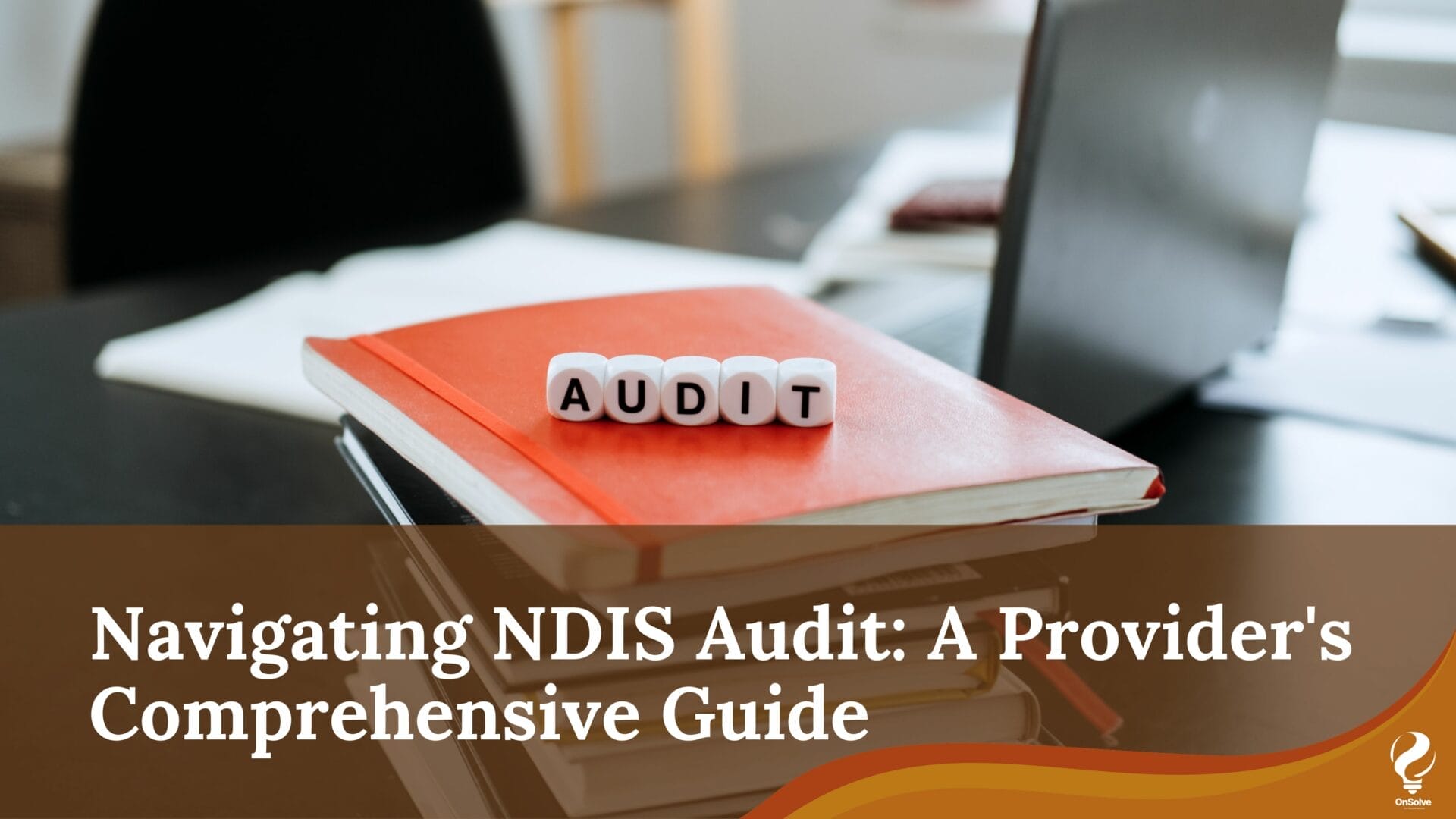The National Disability Insurance Scheme (NDIS) represents a significant shift in the way disability services are provided in Australia. The NDIS is more than just a program. It is a way to support people with disabilities and provide them with empowerment.Therefore, understanding the NDIS as a provider can sometimes be confusing. It can be even more daunting to learn about your responsibilities with the NDIS and how you can prepare to ensure that you meet their requirements and standards. Due to the NDIS’s focus on delivering reliable and optimal service to individuals in need, the National Disability Insurance Agency constantly monitors how providers deliver their services. This blog aims to guide NDIS providers in understanding and preparing for NDIS audit effectively.
What is an NDIS Audit?
The NDIS Quality and Safeguards Commission has set down some ground rules for the providers which are known as the NDIS Practice Standards. They are a set of policies that all NDIS care providers must implement in their operations.
The NDIS audit serves as a quality check which evaluates various aspects of service delivery, governance, and quality management to uphold the rights and well-being of NDIS participants. The primary goal of the NDIS audit is to affirm the provider’s compliance with the NDIS Practice Standards.
What are the Types of audits?
- The verification audit.
The verification audit is required for sole proprietors or small organizations delivering low risk supports to NDIS participants. These audits must be performed every 3 years. These audits are done off-site and are generally less expensive than certification audits. The provider, after choosing an auditor, can send the necessary documentations of your company over to the auditor who will review them directly from the provider’s NDIS portal.
The auditor, after checking all documentations, will then prepare a report which highlights all the aspects of your audit and how you can go further improve your policies and procedures in the case of a non-conformity. The certification body will then take the decision on verification. If you are given a rating of “conformity” or higher, you will get verified.
- The certification audit.
The certification audit is more thorough. It will be more thorough and will involve multiple stages. A certification audit will usually take months to complete.
During the Stage 1 of the certification audit, the auditors will go through every documentation in a process. Any failure or areas of concern will then be reported after careful evaluation so that you can start working on them before Stage 2.
During Stage 2 of the audit the auditors will review whether the non-conformities mentioned during Stage 01 are rectified. There will also be an on-site assessment where the auditors will examine the environment of service delivery. Both team members and clients will be interviewed during the Stage 02 in order to gain an unbiased picture of the organization’s service delivery.
At the end of Stage 02, you will receive a report similar to the verification audit.
How Can Providers Prepare for an NDIS Audit?
As mentioned above, the audit process varies depending on the type of audit and services provided. The duration and cost of the audit depend on the scope of the modules being assessed, and the providers should carefully choose NDIS-approved auditors to ensure a smooth and successful audit process.
Preparation is key to a successful NDIS audit. Providers must understand what the auditors are looking for and ensure sufficient evidence to demonstrate compliance. This includes maintaining supporting documentation for key processes and providing evidence of their implementation. It is also mandatory to ensure that all staff members are aware of their responsibilities.
Implementing a robust document management system can help streamline evidence collection and retrieval. It will ensure documents are well-organized and easily accessible during audits. Additionally, conducting regular internal audits will provide an opportunity for providers to identify and rectify potential non-conformities.
What Happens After the NDIS Audit?
There is no “passing” an audit. Instead, auditors work with major or minor non-conformities based on a number of factors:
- Self-assessment completed in the NDIS portal
- Findings based on documentation offered by the provider
- Compliance with the NDIS Practice Standards
- Clear identification of the registration classes
- Any additional requirements for your case
These factors contribute to a rating from 0 to 3: the latter being “BEST PRACTICES IMPLEMENTED” and the former being “REQUIRES URGENT WORK”.
For each rating, here’s the outcome:
- A rating of 0 (major non-conformities) means the provider isn’t able to demonstrate appropriate preparation, quality assurance, or implementation of policies and procedures and is, therefore, precluded a recommendation for either verification or certification.
- A rating of 1 (minor non-conformities) means the provider has evidence of correct policy and procedure implementation without the appropriate documentation to back them up. This usually requires non-urgent but still important corrective action.
- A rating of 2 (conformity) means the provider can clearly provide evidence of proper policy implementation and documentation based on the factors previously discussed, allowing for recommendation to either verification or certification.
- A rating of 3 (conformity with elements of best practice) means the provider is going above and beyond by not only providing the minimum requirements but also implementing innovations for swift, appropriate service delivery.
You could say that ratings 2 and 3 are a “pass” but that’s not the correct way to look at it. The only time you face deregistration is if you keep ignoring major non-conformities.
The ultimate goal of an NDIS audit is to help providers offer a quality experience for participants on a consistent basis. By understanding and adhering to the NDIS Practice Standards, preparing comprehensively for audits, NDIS providers can maintain a solid commitment to delivering high-quality support and services. Ultimately, the success of NDIS audits contributes to the overall success and impact of the NDIS scheme, positively transforming the lives of people with disabilities in Australia.
Reference







